
Become a member
Join today and help protect nature, beauty and history – for everyone, for ever. Enjoy access to more than 500 places with National Trust membership.
Glorious gardens and woodlands overlooking the River Thames
Cliveden Road, Taplow, Maidenhead, Buckinghamshire, SL1 8NS
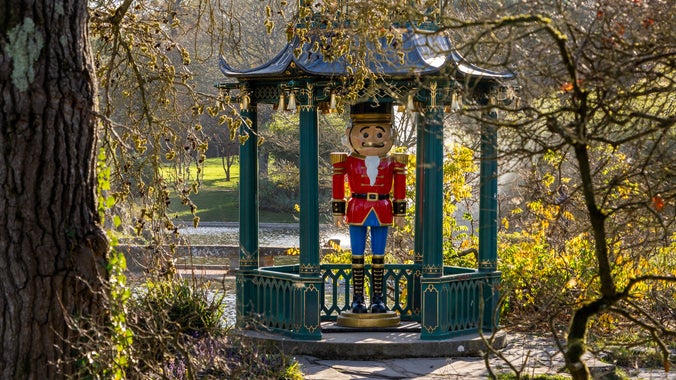
| Asset | Opening time |
|---|---|
| Garden and Woodlands | 09:30 - 16:00 |
| Shop and Weighbridge Secondhand Bookshop | 10:00 - 16:00 |
| Conservatory Café | 10:00 - 15:30 |
| Woodland car park | 09:30 - 15:30 |
| Refreshment kiosk | 09:30 - 16:00 |
| Storybook play area and Maze | 09:30 - 15:30 |
| Woodland Lounge trailer | 10:00 - 15:30 |
| House tours | Closed |
| Ticket type | With Gift Aid | Without Gift Aid |
|---|---|---|
| Adult (18+) | £21.00 | |
| Child (5-17) under 5s free | £10.50 | |
| Family (2 Adults and up to 3 children) | £52.50 | |
| Group (Adult 18+) | £19.95 | |
| Group (Child 5-17) | £9.98 | |
| 1 Adult and up to three children | £31.50 |
| Ticket type | With Gift Aid | Without Gift Aid |
|---|---|---|
| Adult (18+) | £23.00 | |
| Child (5-17) under 5s free | £11.50 | |
| Family (2 Adults and up to 3 children) | £57.50 | |
| Group (Adult 18+) | £21.85 | |
| Group (Child 5-17) | £10.93 | |
| 1 Adult and up to three children | £34.50 |
The Weighbridge second-hand bookshop is in the Gas Yard.
The Conservatory Cafe sells hot and cold meals, drinks and snacks and has indoor and outdoor seating.
On site car parking (included within admission fees). The Main Visitor Car Park is in the Walled Garden at the top of the estate. The Woodland Car Park is located at the other end of the estate in the woodlands. Cycle racks are available in the Car Park. We ask you not to cycle on the estate. Speed limit - 15 mph across the estate
Dogs are welcome at Cliveden and we have a dog walker's guide as to where they can go. Please scroll down to read our dog walking article for more information.
Dogs allowed - more informationCliveden House is currently leased as a luxury country hotel and generally not open to National Trust Visitors. However, from 3 March to 30 October 2025, on a Monday, Tuesday and Thursday, National Trust visitors can enjoy a 30-minute guided visit, every 10 minutes from 11am-12:30pm. Please ensure you have collected a ticket from the Information Centre.
The Kiosk is in the Walled Garden and sells hot and cold drinks and snacks. A drinking water tap is available to refill water bottles on the side of the Kiosk.
Cliveden Plant Centre is in the Walled Garden, outside the Shop.
The Shop is in the Walled Garden and stocks a range of gifts, books, homeware, accessories and children's toys and books.
Toilets in the Gas Yard, by the Conservatory, by the Storybook Play Den and the Woodland lounge are open and checked regularly. Accessible toilets are available at the Doll's House, next to the Storybook Play Den and in the Gas Yard. Baby-changing facilities in Female & Male Gas Yard, Conservatory Toilets and in both toilets at the Doll's House.
Cliveden is located on a chalk hill overlooking the River Thames. There is a level access route around the formal gardens. The Cliveden Estate is large and there are a number of steps and steep slopes without handrails in the wider estate, especially going down to the river side which is unfenced. There are also unfenced lakes and ponds. Click on the drop-down boxes below for more information or please contact the Cliveden Estate Office directly.
The access route map is available from the Information Centre.
Accessible toilets are available at the Doll's House, next to the Storybook Play Den and in the Gas Yard.
Onsite parking is included with admission fees / membership. 22 designated disabled parking spaces are available in the main visitor car park.
Hearing loops are installed at every fixed till point.
There is level access to many buildings across Cliveden. The buildings without level access have permanent shallow sloping access.
The Shop is in the Walled Garden next to the Main Visitor Car Park.
Benches are located throughout the route around the formal gardens.
Paths around the formal gardens are laid to hard standing paths with a loose gravel top. Upon leaving the level access route, the Cliveden’s site is undulating with steep slopes in places and many steps (particularly when visiting Cliveden Riverside).
Our accessible shuttle bus service is available on request. Assistance dogs are welcome in this vehicle.
Two manual wheelchairs (including off road) and two all-terrain trikes (non-powered) are available from the Information Centre. We recommend hiring in advance of your visit. Please email cliveden@nationaltrust.org.uk or call 01628 605069 to book.
Plan your winter visit to Cliveden and enjoy the gardens’ seasonal colours, crisp woodland walks, and family-friendly festive activities. From 15 November to 4 January, explore twinkling Nutcracker-inspired displays, join carol singing in the Sounding Chamber, children’s Christmas crafting in the Doll’s House and browse the Christmas shop.
This Christmas, Cliveden invites visitors to experience the estate at its most magical with extended festive opening hours every Thursday and Friday from 20 November–19 December. Wander through twinkling gardens inspired by The Nutcracker, enjoy winter walks rich with colour and scent, and discover family-friendly adventures across 400 acres of woodland. Seasonal treats, a beautifully stocked Christmas shop, carol singing in the Sounding Chamber, and hands-on wreath-making workshops make it the perfect place to embrace the spirit of the season. Dogs on short leads are welcome across all lit-up areas on late-night openings ONLY, so the whole family can enjoy the festive sparkle together.

Looking to get the whole family outside this winter? Cliveden has festive fun for everyone, whether young in body or young at heart. From twinkling walks to self-led family adventures, it’s the perfect place to make magical winter memories together. Discover all the seasonal delights waiting for you and the kids this Christmas.
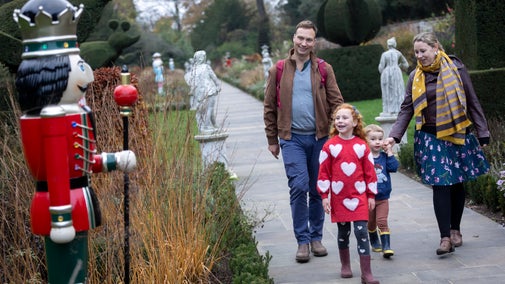
Follow in the footsteps of dukes, earls, kings and queens as you stroll through a series of impressive spaces at Cliveden this winter, each with its own special charm. Enjoy year-round interest and colour, from the bedding scheme of the Parterre and the newly restored Long Garden with its dazzling display of vibrant colour, form, and texture. Explore Lord Astor’s sculpture collection and the impressive Cliveden Maze.
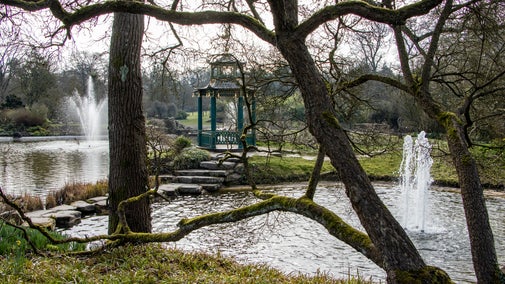
With 375 acres of woodlands, riverbank and formal gardens to be sniffed and explored this winter, Cliveden offers a varied selection of dog-friendly walking trails throughout the winter months. Grab a warm drink and warm up this winter at the Woodland Lounge with an indoor seating area, outdoor benches and dog tie up points. The Pooch Passport has returned to Cliveden and is running until 28 February 2026.
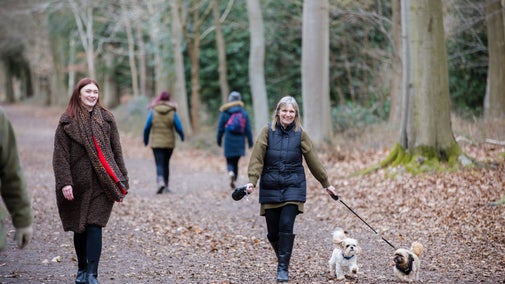
Set high above the Thames with far-reaching views, Cliveden's impressive gardens and majestic woodlands capture the grandeur of a bygone age. With a history of over 350 years worth of glamour and intrigue, Cliveden Estate is a place of exquisite enchantment.
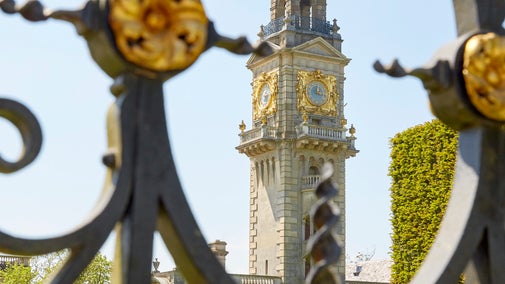
Step into Cliveden’s story on a volunteer-led history walk. Every corner of Cliveden has a tale to tell — and this November, our wonderful volunteers are ready to share them with you. Stroll through the estate and uncover stories of dukes, duchesses, gardeners and guests who helped shape Cliveden’s remarkable past. Walks run every Tuesday, Wednesday and Thursday (subject to volunteer availability). Start time: 11am. Each walk lasts 60–90 minutes and covers up to 2 miles. Tickets are free and available on a first-come, first-served basis from the Information Centre in the Walled Garden. Walks include some inclines and steps, so may not be suitable for wheelchairs, pushchairs or young children. Assistance dogs only.
Step inside the house to hear Cliveden's stories from the Astor family and more. Cliveden House is currently leased as a luxury country hotel and generally not open to National Trust Visitors. However, March – October, National Trust visitors can enjoy a 30-minute guided visit, every 10 minutes from 11am-12:30pm. Please ensure you have collected a ticket from the Information Centre on arrival, as these are first come, first served. Visit ‘Things to see in the house and chapel’ page for more information.
Head to the western side of the Parterre for a surprise; the unassuming domed building overlooking the river houses a wonderfully ornate chapel, also known as the Octagon Temple. The Chapel is open in the afternoons from April to October on a Monday, Wednesday, Friday, Saturday, and Sunday from 1:30pm to 3:30pm, subject to volunteer availability and weather conditions. See the 'Things to see in the house and chapel' page for more details on opening.
Enjoy 80 acres of year-round interest and colour, from the bedding scheme of the geometric parterre, hundreds of roses in the Rose Garden, an Oriental-inspired Water Garden, to Lord Astor’s sculpture collection and the impressive Cliveden Maze. There are spaces for everyone to enjoy, for quiet reflection or time with loved ones.
Stroll through Cliveden’s woodlands this winter and follow paths dusted with frost and falling leaves. Explore tree-lined rides and viewpoints framed by the season’s rich colours. Keep an eye out for the estate’s quirky treasures, from a flint grotto to a giant slice of a Californian redwood, left behind by the families who have called Cliveden home.
Soak up one of the prettiest stretches of the river, Cliveden Reach. The perfect spot for a picnic or a stroll at the river side. Treat yourself to a trip on a skippered cruises or a self-hire vessel. Head to boatingatcliveden.co.uk to book your river adventure. Boating at Cliveden runs from April – October.
Stay in one of our two characterful riverside cottages nestled on the banks of the River Thames within the Cliveden Estate. Packed with charm, the cottages boast bright and modern interiors with beautiful views over the river, offering stays for two to four people.
From Saturday 15 November 2025 – Sunday 4 January 2026, enter an enchanting Christmas experience at Cliveden as scenes from The Nutcracker come to life across the estate. Explore giant Nutcracker-inspired displays, join carol singing in the Sounding Chamber, children’s Christmas crafting in the Doll’s House and browse the Christmas shop.

If you’re looking to get the whole family outside this winter, look no further. Cliveden has something for everyone, whether young in body or young at heart. From frosty walks through the gardens to walking trails sparkling with winter colours, it’s the perfect place to make the most of your family visit this season.

Stroll through Cliveden’s woodlands this winter and follow paths dusted with frost and falling leaves. Explore tree-lined rides and viewpoints framed by the season’s rich colours. Keep an eye out for the estate’s quirky treasures, from a flint grotto to a giant slice of a Californian redwood, left behind by the families who have called Cliveden home.
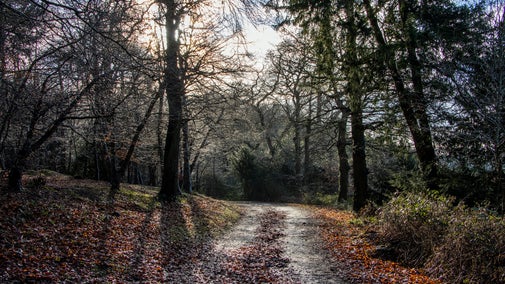
Follow in the footsteps of dukes, earls, kings and queens as you stroll through a series of impressive spaces at Cliveden this winter, each with its own special charm. Enjoy year-round interest and colour, from the bedding scheme of the Parterre and the newly restored Long Garden with its dazzling display of vibrant colour, form, and texture. Explore Lord Astor’s sculpture collection and the impressive Cliveden Maze.

The 2025 House & Chapel season has now concluded. Please check back in March 2026 for the release of the 2026 season dates. Step inside Cliveden House, a place steeped in history, intrigue, and timeless elegance. Originally built in 1666 by the 2nd Duke of Buckingham as a gift for his mistress, the house has long been a retreat for the elite. Today, enriched with antique furnishings and exquisite period features, Cliveden remains true to its heritage while offering a luxurious setting to rest, meet, and be inspired.

Restoration work on Cliveden’s Long Garden is now complete, with the garden reopened to visitors. The aim of this restoration was to create a more sustainable planting scheme designed by James Scott, FSGLD, MBALI, MD and Principal Designer of The Garden Company. James’s design pays homage to Norah Lindsay’s original early 20th-century designs. Situated along the north boundary of the Cliveden estate, parallel with Bourne End Road, the Long Garden has been updated to reflect both its historic roots and modern ecological considerations.
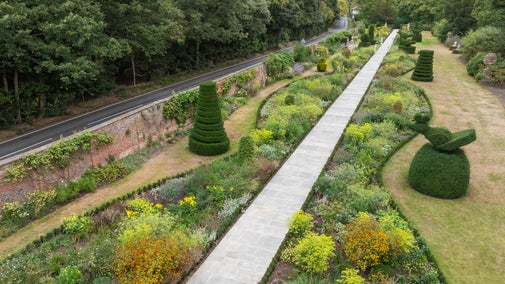
Cliveden is the perfect place for a group day out this winter, with vibrant seasonal displays, an outstanding sculpture collection, and engaging educational resources for school visits.

Discover a range of events for all the family this winter at Cliveden.
Wrap up warm and head to Cliveden this winter for scenic walks to suit all abilities. Discover gardens and woodland filled with seasonal colour, crisp winter scents and moments of wildlife — the perfect time to slow down and explore the estate.
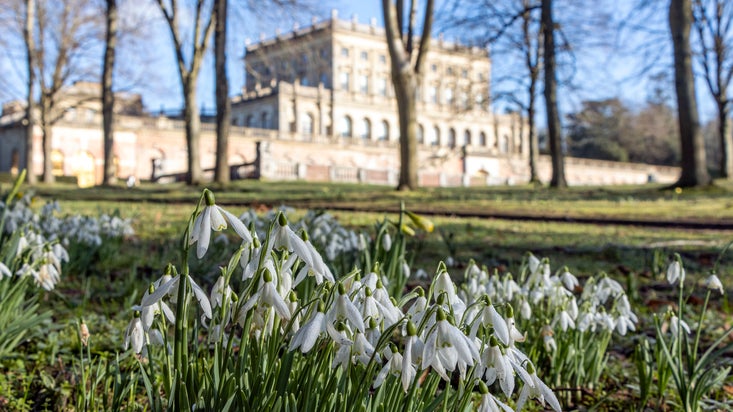
Why not step out into the crisp winter air and enjoy a refreshing dose of nature this season? At Cliveden there are miles of paths to follow through woodland and alongside the river. Enjoy scenic views across to Maidenhead, Marlow and Windsor. We'd love for you to cycle to Cliveden and you can lock bikes up in the spaces provided in the Walled Garden. 5 year olds and under are able to bring small scooters and balance bikes onto the estate. Mobility scooters can also be taken onto the estate but please leave bikes with pedals by the Information Centre.
Take in tranquil riverside scenery, shady woodland, dramatic views of the Berkshire countryside and places of historical interest on this circular trail.
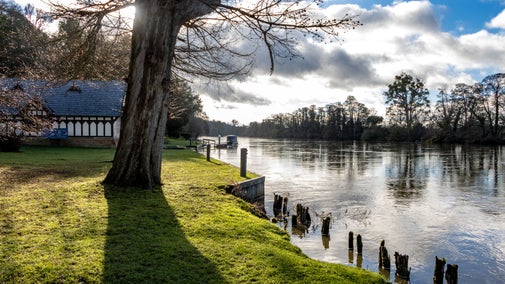
Explore the woodlands, discover a former owner of the estate and take in glorious views of the River Thames, the surrounding countryside and Cliveden House.

Explore the woodland at Cliveden on this moderate walk taking in a play trail for the kids, picnic areas and spectacular views over the River Thames and the surrounding countryside.
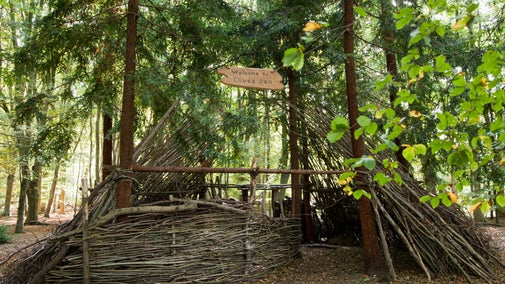
A family-friendly woodland walk with a natural den and picnic area, plus a play trail featuring a rope swing, stepping stones and balancing beams.

The 2025 boating season has now concluded. Please check back in April 2026 for details of the upcoming season’s dates and prices. Discover more about Cliveden’s long association with boating on the River Thames, including its connections to The Wind in the Willows and how you can hire a boat to experience this timeless pastime for yourself. ‘Boating at Cliveden’ operates daily from April to October, subject to river and weather conditions.
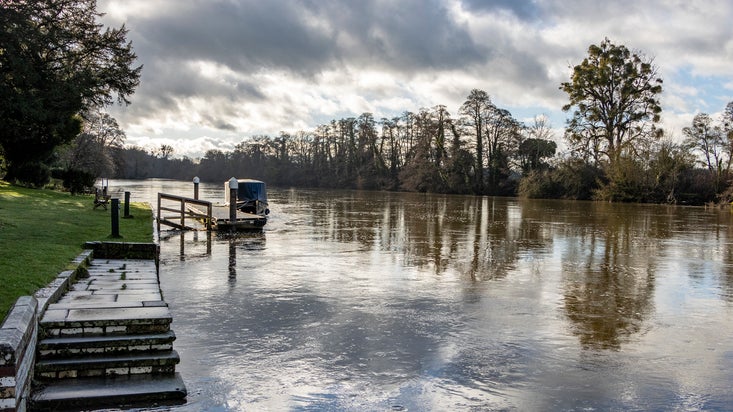
At Cliveden, there is a range of food outlets available on your winter visit. Whether you are looking for a sit-down lunch or a coffee to go, there’s something to suit your needs. Looking for ease throughout this Christmas holidays? We offer children’s portions and kids’ pick n mix lunch boxes which include 5 items to fuel their adventure.

Browse the gift shop and plant centre for souvenirs or gift ideas from the National Trust range and products local to Cliveden. Explore the seasonal displays and discover autumn plants in the plant centre. Pop into the second-hand bookshop this winter to delve into a treasure trove of books, from children's literature and cookery to heath and history. Every purchase helps us look after Cliveden for everyone, for ever.
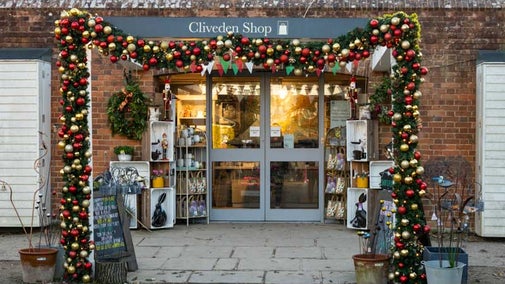
Stay in one of our two characterful riverside cottages nestled on the banks of the River Thames within the Cliveden Estate this winter. Packed with charm, the cottages boast bright and modern interiors with beautiful winter views over the river, offering stays for two to four people.
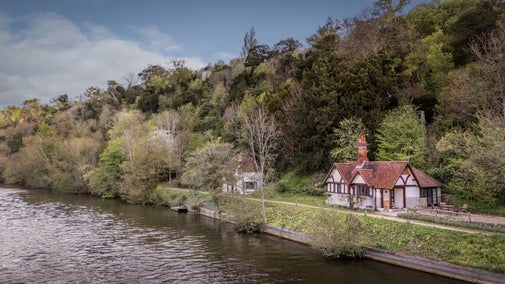
Views over the Thames from this half-timbered former ferryman’s cottage near the Cliveden estate.
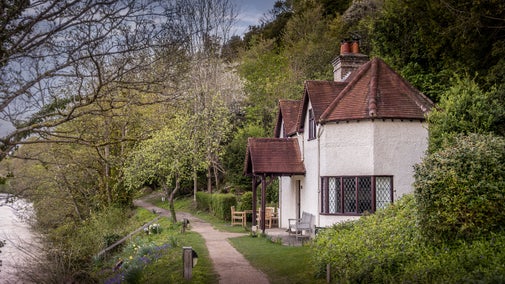
On the Cliveden Estate, this recently refurbished cottage has gorgeous river views.
Wrap up warm and head to Cliveden this winter for scenic walks to suit all abilities. Discover gardens and woodland filled with seasonal colour, crisp winter scents and moments of wildlife — the perfect time to slow down and explore the estate.
Broadcaster and author Clare Balding invites you and your beloved dog to join her for a winter walk at Cliveden.
Set high above the River Thames, our magnificent gardens and breath-taking views have been admired for centuries. Visit us and you’ll discover a series of gardens with impressive floral displays, distinctive topiary and an outstanding sculpture collection as well as acres of woodlands to explore. We also have lots of events and activities planned throughout the year including the school holidays to suit all ages and tastes. Especially for families, there is a storybook themed play area, giant maze and woodland play trail and the gift shop, which was designed with families in mind.
For over 300 years Cliveden was home to dukes, earls, viscounts and even a prince. Learn how it became a glittering hub for exclusive parties and political gatherings.
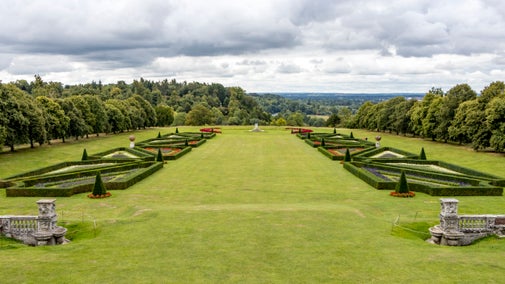
Royalty, politics and some of the most prominent society names of the time made Cliveden the place it is today, including generations of the royal family and the notorious Astors.

Discover the background and history of some of the main features in the garden at Cliveden and who was responsible for commissioning and designing them.

Learn about Harriet, duchess of Sutherland, one of the great society hostesses of the age, and a driving force in re-building the Sutherland properties.

Cliveden has many sculptures in its grounds, including ancient baboons and bold choices of ‘new art’ sculpture from Cliveden’s 19th-century owners.
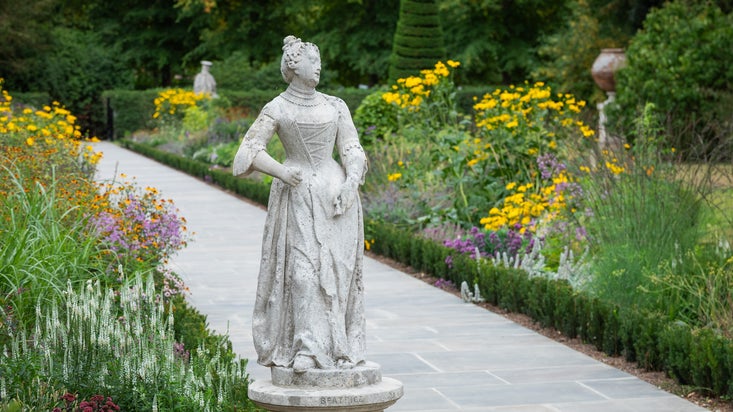
Restoration work on Cliveden’s Long Garden is now complete, with the garden reopened to visitors. The aim of this restoration was to create a more sustainable planting scheme designed by James Scott, FSGLD, MBALI, MD and Principal Designer of The Garden Company. James’s design pays homage to Norah Lindsay’s original early 20th-century designs. Situated along the north boundary of the Cliveden estate, parallel with Bourne End Road, the Long Garden has been updated to reflect both its historic roots and modern ecological considerations.

Discover what goes into the upkeep of this historic garden and the work of the team of gardeners and volunteers behind the scenes to keep the garden looking great all year round.

Discover more details about the conservation projects carried out over the past few years to look after the Grade I listed garden and house at Cliveden.

Find out about actor Diane Keaton’s experience of filming romantic comedy-drama Hampstead at Cliveden.

Visit Cliveden and learn how features of the estate influenced and starred in Disney’s 2015 Cinderella movie.

Discover how and why to volunteer at Cliveden and which opportunities are currently available.
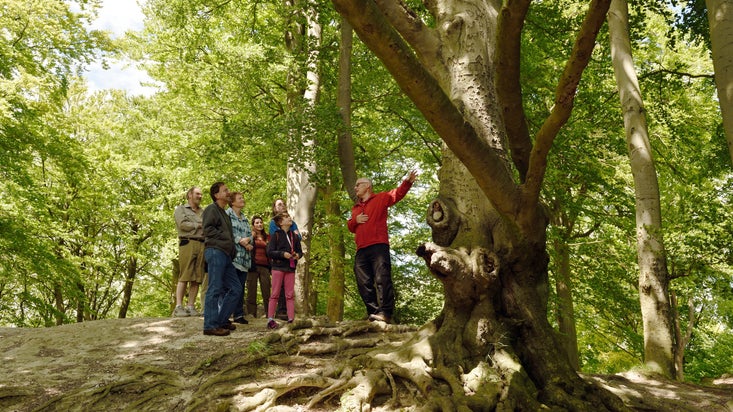

Join today and help protect nature, beauty and history – for everyone, for ever. Enjoy access to more than 500 places with National Trust membership.
By sharing your email address you’re agreeing to receive marketing emails from the National Trust and confirm you’re 18 years old or over. Please see our for more information on how we look after your personal data.